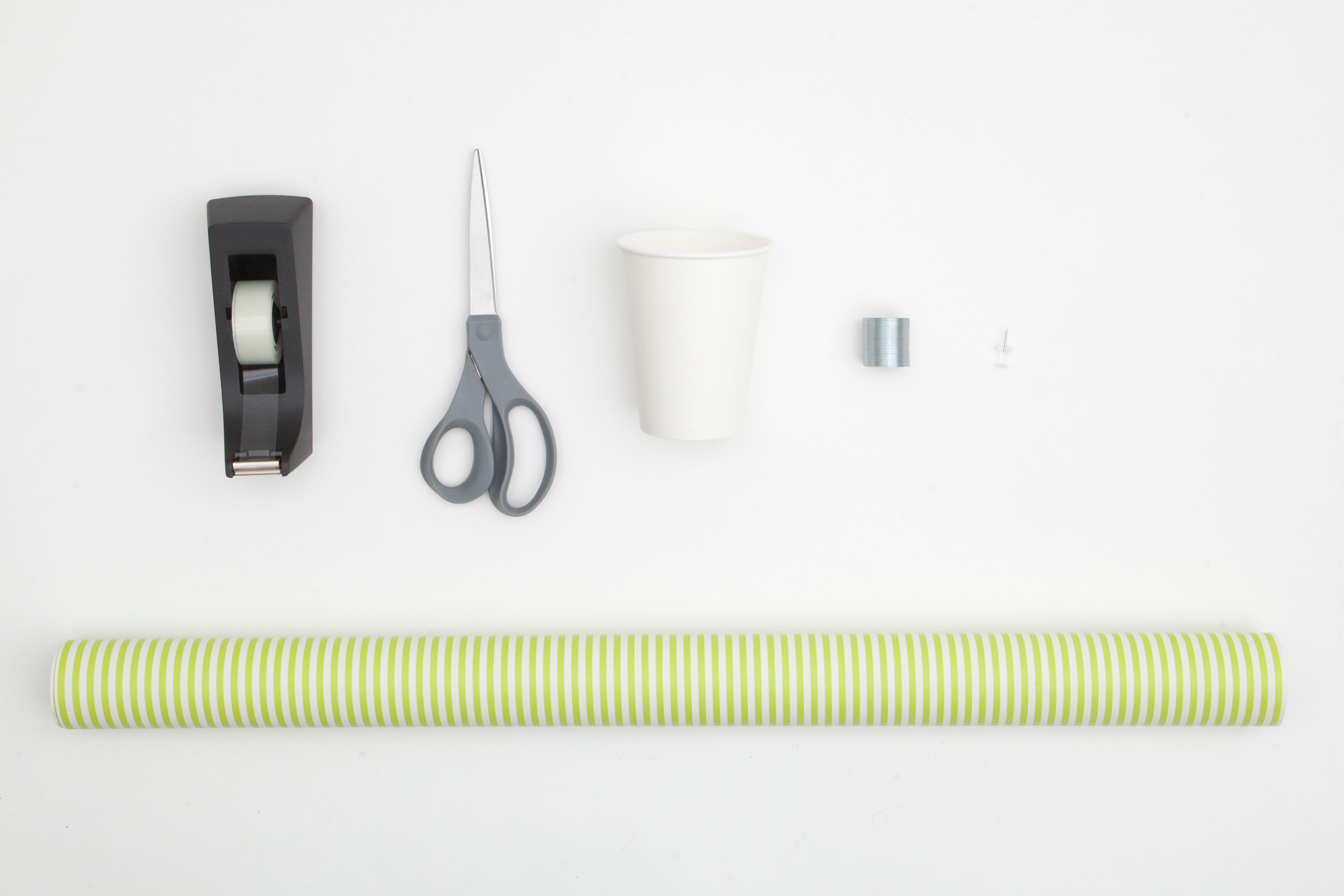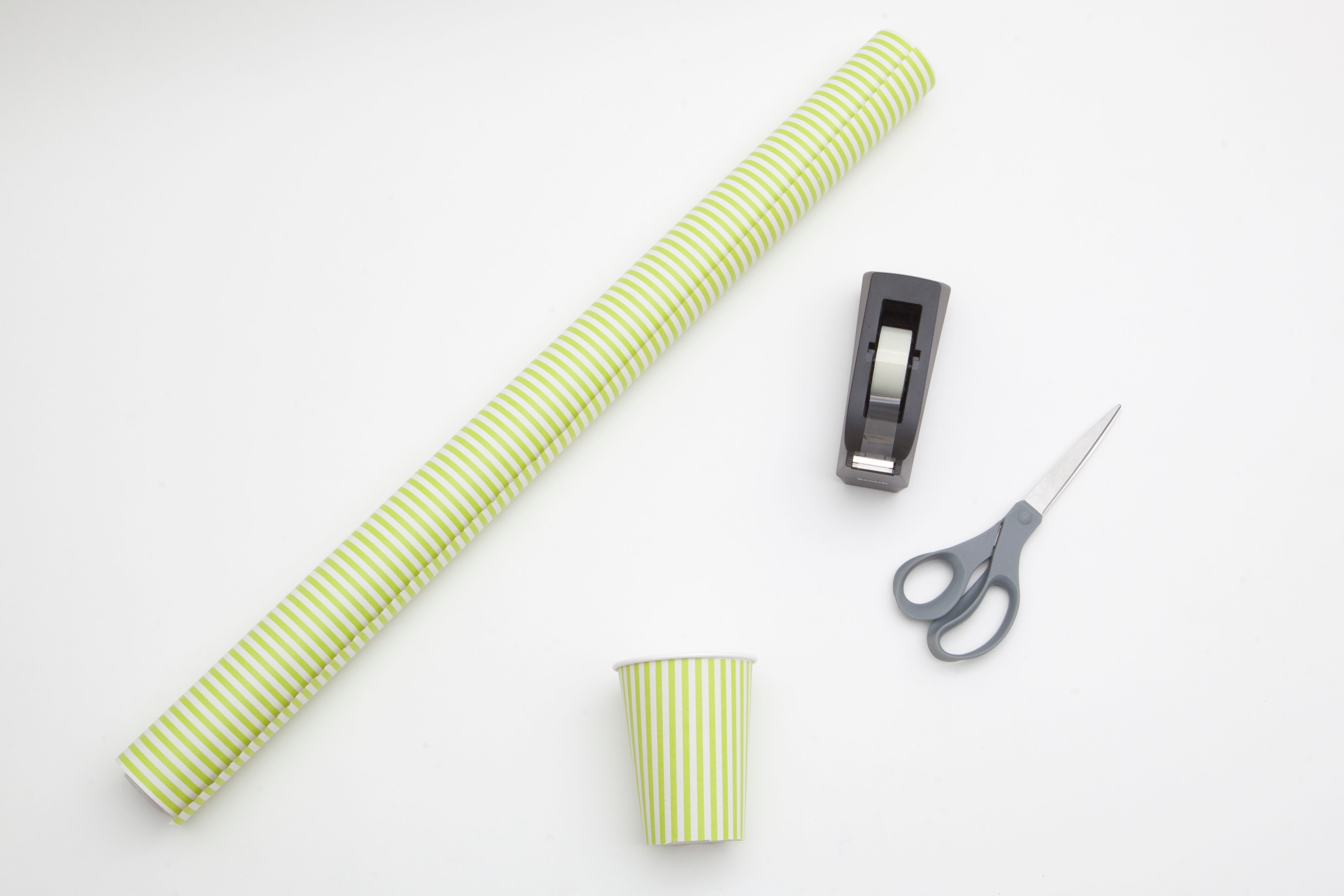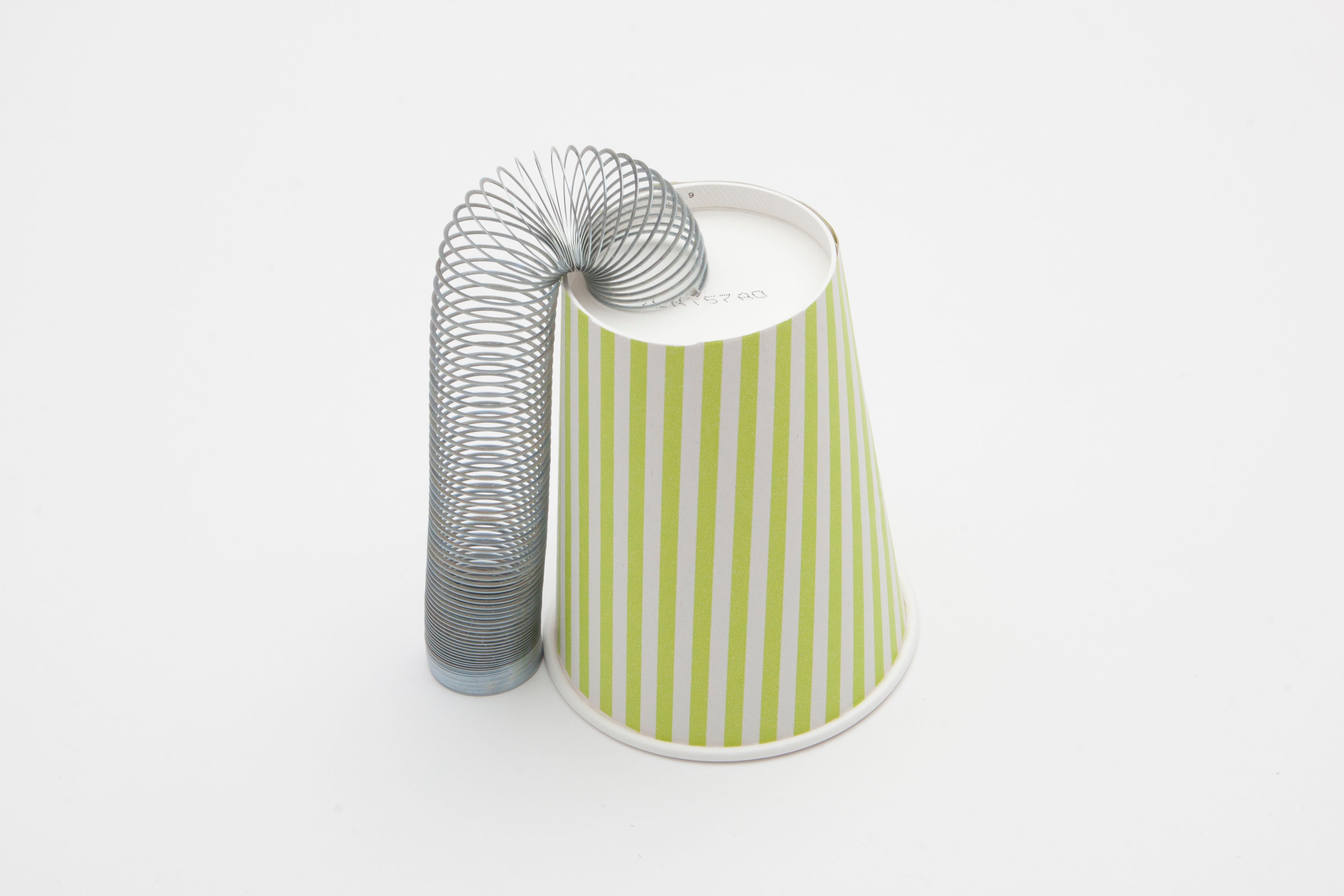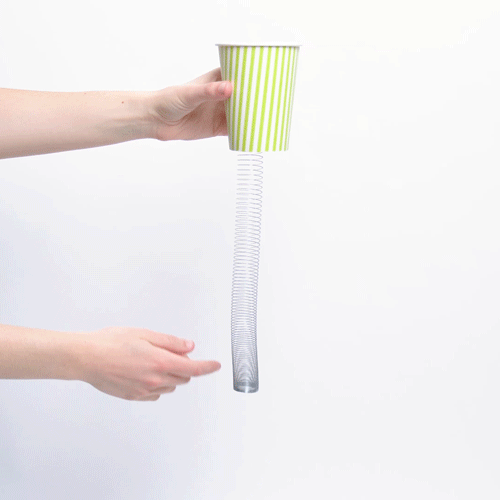Step-by-step tutorial
Step 1
Gather your materials.

Step 2
Wrap the cup in wrapping paper to decorate it.

Step 3
Poke a hole in the middle of the bottom of the cup. The hole should be large enough to thread the slinky through.

Step 4
Push one end of the slinky up through the hole in the bottom of the cup, leaving about three spirals inside the cup and the rest of the slinky hanging out the bottom.

Step 5
Holding the cup steady, let the slinky bounce up and down. Do you hear it? What kinds of sounds does it make?

Learn more
Experiment further with a plastic slinky. Does it make the same sound as a metal slinky? Try letting the bottom of the slinky hit the floor. Does it make a different or more pronounced sound?
Learn more
Have you ever wondered how the “Pew! Pew!” laser sounds in Star Wars and other sci-fi movies were made? No, they weren’t real lasers. The sound engineers who make those otherworldly sounds actually use a very down-to-earth technique: they flick a slinky or a long metal wire.
Slinkies (and solids in general) can transmit sound. You normally think of sound as a vibration in the air, but the air isn’t the most important part — the vibration is. As long as a solid can shake and vibrate, a sound can travel through it just like through the air. This is why you can hear a train approaching from far away if you put your ear to the ground. If the vibration in the solid is strong enough (or amplified by something, like a cup), it’ll also vibrate the air, which you can hear normally!
The weird thing about sound in solids, though, is that different parts of a sound move through them at different speeds. High-pitched parts travel really quickly in solids, while low-pitched parts travel slower. So when you flick a slinky, the high-pitched parts of the flicking sound reach your ear first, followed by the lower and lower parts. It sounds kind of like someone running their finger super fast down a piano keyboard.
Slinkies and wires are great for demonstrating this because they’re long (which gives the sound more time and space to split up) and they’re good at carrying vibrations. Find out what splitting sound sounds like with this acoustical project!
